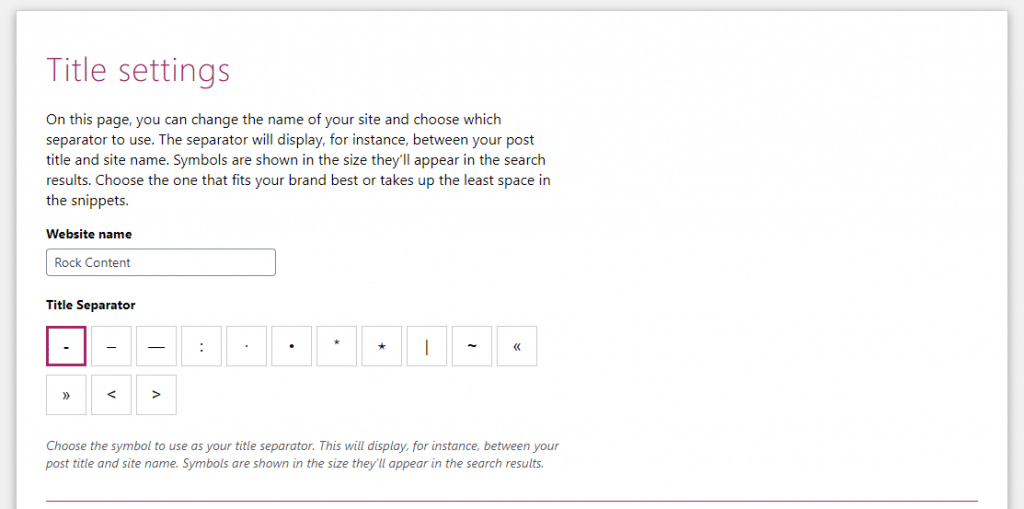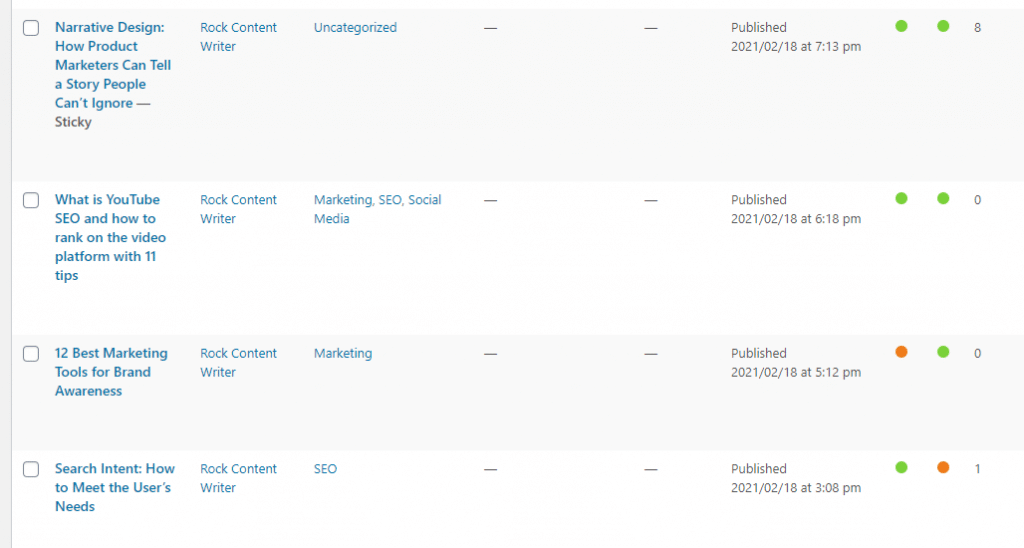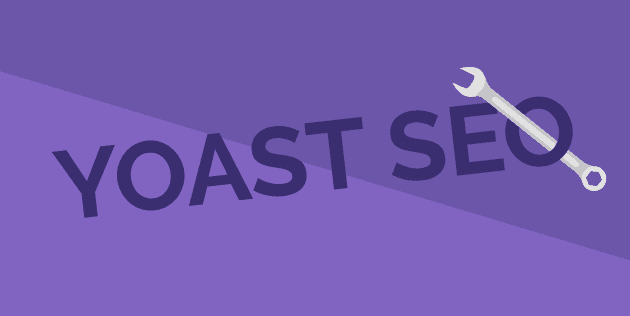Making your blog successful in the online world is not an easy task, is it?
It would be nice if we just thought of a name and a page with a beautiful layout came up.
Better yet, if we wrote our first content and it soon appeared on the first page of Google.
But as things are not all roses, you need to work hard to get your blog to the front pages of Google.
There are two major keys to achieving this: quality content andgood SEO.
The great news is that in today’s post we will present a guide to one of the most valuable WordPress tools, the Yoast SEO plugin.
No matter what your goal is, whether it’s optimizing your personal blog, ranking your company well or improving a customer’s results, Yoast is the ideal SEO plugin to make your blog search engine friendly.
Today you will learn from the installation to the main features to optimize your page!
Check it out!
In today’s post you will learn:
- Downloading and installing Yoast
- Setting up Yoast SEO
- Titles and metadata
- Social
- Advanced
- Tools
- Search Console
- Using Yoast
- Conclusion
Downloading and installing Yoast
Let’s start from the beginning.
If you just created your blog and still don’t know how to install the plugin, let’s show you how simple the task is.
If you already have Yoast installed on your WordPress site, feel free to proceed to the next chapter.
If you stayed, let’s go ahead!
Go to your WordPress Dashboard and find the Plugins option in the left column. Hover the cursor and you will see the “Add New” option.

By clicking on this option, it will take you to a page where you can browse the various plugins available, a kind of WordPress app store.
This section has four tabs: “Highlights”, “Popular”, “Recommended” and “Favorites”.
It’s possible you cannot find Yoast in these categories.
But don’t panic!
You will see that next to it there is a search function. That’s a relief!
All done! Now we have found Yoast SEO.
Just click on the “Install now” option. WordPress already does the whole process for you: download, install and ask you to activate the plugin.
To check if everything went well, you need to see an “SEO” option in your left sidebar at the dashboard, the same one where the plugins option is.
If it is there, it is because the plugin is ready to use!

All done! The easy part is now complete.
But that’s not what you came here for, is it?
In case you have never used the plugin before, the next step may seem a little more complicated, but with our help you will do very well.
Let’s go to one of the most fundamental moments to make good use of Yoast: the setting up.
We will not teach you how to set your website or blog, especially because the ideal configuration for one may not be good for the other.
But we will present all the options of Yoast for you to understand each one and be able to choose which fits best to you.
Importing configurations from other SEO plugins
Before we go through a step by step on how to configure your Yoast, let’s give a shortcut to those who already have an SEO plugin installed on their WordPress.
If this is your case, we will show how you can import the settings of your other plugin.
However, if you have never had another SEO tool, you can proceed to our step by step below, “Setting up Yoast SEO”.
Anyway, to save plenty of time, in case you already had another SEO plugin, you can import its configurations. To do that, just click on “Tools” at the same menu from the last image, at the left sidebar.
You will come across these options:

Now, select “Import and export” (as you can see by the description, it talks about importing from other SEO plugins). And then, click “Import from other SEO plugins”.

When you select this option, you will see that Yoast already gives you the option to download the settings for 4 specific plugins: HeadSpace2, All-in-One SEO, SEO by WooThemes and wpSEO.
If one of these is your old plugin, just select the option and click on import. It’s that simple!
As Yoast’s description you see above recommends, if you use a plugin different from these, you can check out the SEO data converter.
If you have already exported the settings from another plugin, just click on the import option, select the desired file, then click on the blue button! That’s all!

Setting up Yoast SEO
Well, if you don’t have any settings to import from other plugins, let’s start from scratch!
If you have imported the configuration from other plugins, maybe you should follow the step by step and check if everything is correct.
A little precaution doesn’t hurt anyone.
To begin, find the SEO option in your sidebar again and this time click on the “General” option.
That’s where we’ll start, by configuring your plugin’s global settings!
General settings
When we select this option, we go to this screen:

General
The “General” option is the first tab, and there is not much to do here.
If one day you need to restore Yoast’s initial settings, this is where you find this option, as we see in the image above.
You can also take the tour, a simple tutorial showing how to use the tool.
But if you really want to configure Yoast, let’s go ahead to the next tab: “Your Info”.
Your Info
In this section, you have the option to put your website’s name on Yoast. If you have an alternative name for your site, you can also put it here.
You can also tell Yoast if your website or blog is personal or from a company, which will be important for Google to incorporate in its Knowledge Graph (features that provides precise data about the terms searched by visitors, allowing for even more assertive Google results).
Here, you can also add other informations like the company logo, which can be relevant in Google’s Knowledge Graph.
Webmaster Tools
Now it’s time to check the Webmaster Tools. If you plan to use tools like Google Search Console, Alexa, Bing Webmaster Tools or Yandex, you can verify your site here.

Regardless of which tool you choose, the process is basically the same. Let’s use Google Search Console as an example, which is the most popular choice.
Open the Search Console dashboard and select “Manage property” then “Verify site” in the box for the site you want to link to Yoast. If you have not added the site to Search Console, you will need to complete this step first.
Security
Last but not least, we have the “Security” section.
If you are the owner of a website with only one author, you don’t have much to worry about right now and you don’t need to check the option.
But if your site has several authors who can post, add content and access the site, this session can be of great help!
When this option is unchecked, some more advanced sections of settings, such as redirects, for example, are visible to all blog authors. If you trust them and don’t worry about them messing with some settings on your blog, there is no need to select.
However, if you fear that someone, even by accident, might change some settings, it’s best to select the option to not have any kind of concern.
Titles and metadata
Let’s move on with our Yoast tutorial. We still have a lot of ground to cover, but in the end, you will be able to optimize your website or blog SEO with this plugin.
This option is in the sidebar under SEO and right after “General”.
This configuration is essential, because this is where you decide how your site will appear on the SERPs (search engine results pages).
See below how to configure this essential step for your search engine optimizations.
General

“General” is where you will define how your title will appear on the SERPs. For example “Site name | Contact us” or “Blog name – Contact us”.
It is important to remember that the sign you choose to make this separation in the title will appear in ALL posts on your blog.
You may also have noticed that there is an option to “Force rewrite titles”, so the Plugin automatically corrects an error that is relatively common in WordPress, with sites appearing with duplicate names.
In case the problem of duplicate titles persists, it is better to contact your developer so that they can tinker with the site code.
Homepage
What you see in this screenshot may not be exactly what will appear when you select the “Home page” tab.
The site we are using in this example has one page for the website’s home page and another for the blog page.
If this is how your site is and you want, for example, to edit the title or meta descriptions that appear in the SERPs, just click on “Edit the posts page directly” (to edit the blog) and make the desired changes.
Post types
Now we are in a new section: post types.
Titles and meta descriptions
To start, we will focus on two very important aspects for SEO and page CTR. Here you can create templates for your page titles and meta descriptions.
They can be different for each page. For example, how the two will appear for blog posts may differ from how they will appear on a website page.
If you already know Yoast, you know that inside each post you can edit the title and the meta tags, so you may wonder why this feature is here.
When you do not edit the meta tags in each post, WordPress automatically places the template you defined here.
For example, you can choose to display the title and the date:
%%title%% %%date%%
If you want the post category to appear, you can use:
%%title%% %%category%%
Yoast’s own website shows possible ways to create your template, as there are several variations. You can check it out through this link.
Important: if you leave the meta description area blank, search engines will add a part of your text. We advise you to always create meta descriptions.
Meta Robots
In this section we see a button where we can select two different options: “index” and “noindex”.
In most cases, be sure you leave the “index” option selected.
“Noindex” is the same as not letting search engines index a page, that is, it is the same as saying: “Google, I don’t want this page to appear as an answer to visitors’ searches”.
It is usually to avoid Google penalties, such as avoiding duplicate content.
Snippet date preview
This is an option that will largely depend on the type of content you have on a specific type of page.
For example, if you work with evergreen content, which never loses its value, it may be better to opt out. People can see the date on the SERPs and deduce that their post is out of date.
If your post is a list of the richest men in the world, for example, it is interesting to leave the date, after all it is a list that is constantly changing. Current content and news as well. As an example, if you want to see bids for a game, the date will show you whether it is the recent game or bids from a 2010 game.
Yoast SEO Meta Box
This option is for blogs that may have multiple authors and contributors. If you, as an administrator, prefer that they do not configure Yoast within specific blog pages, leaving this box checked will solve the problem.
If you change your mind eventually, no problem! Just go back and change the option in the box.
Taxonomies
This section is mainly for blogs or websites that have different categories or tags to organize the posts.
It works just like the titles and meta descriptions configuration, but they are exclusively for pages of a category or a specific tag.
Archive
If you have a blog with several pages and posts, having a good way of organizing them, whether by authors, subjects or date, can make the user’s experience easier.
However, creating these types of archives may not always be very good for search engines, because they may consider the contents as duplicates. And that is exactly what this tab is for!
That’s because from here you can tell search engines to index or not your archive pages.
Another very useful feature of this tab is to set your special pages, like the 404 Error page, for example.
You can turn it into something you want to appear there, preventing it from being just a usual not found page.
That way you may get the reader where you want to go.
Other
Finally, the “Other” section.
Here we can set some other features that are already directly explained by Yoast itself.
Social
Now we will return to the menu in the sidebar, again within “SEO”; now we will select the option “Social”.
You will come across this screen:

The first tab within “Social” is the one we see above: “Accounts”.
This session is very self-explanatory.
All you need to do here is to paste the URLs of your respective social media profiles.
This serves to notify search engines to associate these social networks to your website.

As you can see, we also have an individual tab for each social network. That way you can control how the shared content will display on each one.
In the option “Facebook”, selected in the example image, we see the option to add Open Graph data in the <head> section of your website, which will make it easier for Facebook to use an appropriate image, a title and a description when someone share some content of your website.
The Image URL option exists for you to place a default image for pages that do not contain any images at the sharing time.
Here you can also select an administrator for your fan page (if your site has one, of course) so that they can access Facebook Insights.
It is a great way to track the performance of your posts, with the number of likes and shares and how much traffic your site gets directly from your Facebook.
To access, just click on the option “Facebook Insights” and then register your website’s domain on Insights.
The other social networks have very similar setups, that’s why we focus on Facebook as our main example, after all it is the most popular social network in the world.
XML Sitemaps
At this point you have probably already memorized where our main menu is. We will select the option “XML Sitemaps”.
One of the best things about Yoast SEO is that it makes managing a sitemap an extremely simple task.

When you enable the XML sitemap function, Yoast auto-generates a sitemap and updates it when you add a new comment and notifies search engines when you add new content.
In the other tabs you will configure your sitemap. Check the tabs and if you see something you don’t want on the sitemap, just uncheck it and you’re done.
You can also delete specific posts from your sitemap, just put the post identification number (ID) in the deleted posts section.
Advanced
Now we are going to dissect another of the options in our side menu, “Advanced”.
Breadcrumbs
This section can be a little complex, so much that Yoast itself has an article explaining what to do with it.
But before that, let’s explain what breadcrumbs are.
When you enable breadcrumbs on your site, visitors will see links at the top of the page that show the path to reach that page. For example: Site name > Blog > Post title.
Breadcrumbs are also visible on SERPs:
Well, as we warned you before, just clicking “Enable” will not be enough to activate breadcrumps on your website. So, be a good user and follow Yoast recommendations. Read the article and activate the function on your website.
Permanent links
Next to “Breadcrumbs” is the option “Permanent links”.
Here you can change the structure of your URLs and permanent links, making them more friendly to search engines.
As you can see from the description below each option, Yoast does a better job than I would at explaining each one. We can move on to the next tab.
RSS
If you have been blogging for some time, you know that there is a huge possibility that one day you will find identical content posted on another site without your permission or any credit to you.
These virtual thefts are extremely common, unfortunately.
But this tab is here to help.
This unpleasant situation will possibly happen if you have quality content on your blog. This section will not be able to completely prevent you from being copied, but this function allows you to add it to your posts when they appear in the RSS feed, giving you credits and linking back to your site.
That is, if someone copies RSS content from your website, you at least earn credits and links to your website.
Tools
By following our sequence through the side menu, we come to the “Tools” section.

Yoast itself comes with its own tools. Each of them comes with a brief explanation.
The File Editor is where you will change files like robots.txt (a root file for your site) and your .htaccess (guidance/reading file).
The Bulk Editor is a tool that you will not normally use, but if you ever need it, you will be extremely grateful to have it.
In case you ever need to change multiple post titles and descriptions at once, you can make a list of these posts and change them with this tool. This will help you to avoid the long task of going from post to post to edit them.
“Import and Export” is the option we used at the beginning of this tutorial, remember? You can import the configuration you used in another SEO plugin or export your own.
The last option is the SEO calculation. When we see how to use Yoast, you will understand this topic better. In short, you set a keyword for a page on your blog and Yoast evaluates how search engine friendly it is.
Search Console
Finally, we reach the Search Console, the last important step in this general blog setup.
This step only applies to you if you use Google Search Console. If you don’t use it, make sure you do!
If you don’t want to hear my advice, well, then you can proceed to the next chapter.
Here, you’ll get your authorization code to connect Yoast to Search Console. By doing this you will be able to see a list of errors on your pages and fix them right from your dashboard. If you have a broken link, you can redirect it.
To configure, just click on get code, color below and authenticate and select your site from the list that appears.
Save the profile!
There, you can now use this wonderful tool from Google.
Anyway, now that you’ve configured all your Yoast and already know all the plugin’s tools and possibilities, it’s time to learn how to use Yoast SEO in practice!
Using Yoast
Now that everything is installed, let’s go back to our side menu. Breathe. You don’t have to go down to SEO. Now you need to click on “Posts” or “All Posts” to see the tool in action.

In your posts tab you will see the Yoast rating in front of each entry.
Let’s take a closer look:

We can see three different evaluations that Yoast gives to each post.
As we can see, the system is quite simple. There is actually a fourth evaluation that Yoast could give to your pages.
Let’s understand each one of them:
- The green dot means your site is search engine friendly. In other words, the page contains few or no SEO errors.
- The orange dot means it has a significant amount of errors and that you can improve the post.
- The red dot is very intuitive, your page is in serious trouble in the eyes of search engines.
- We also have the gray dot. This point means that Yoast has no information about that page. Perhaps no keywords were chosen for the post, for example.
From this column you can go through all the posts on your site and look for those that need to be optimized.
The color of the dot will indicate the urgency to fix each post.
It is important to check even the green dots, since even in those there might be some mistakes that you can correct.
If you found a page you want to optimize, just click on the post.
Optimizing a post

When you open a post, scroll down to the bottom of the page, after the text editor. You will find the screen you see above.
Now let’s go step by step:
When you click on the Yoast tab, these options will appear for you. The first thing to do is to inform Yoast what your keyword is. In this case, “YouTube SEO“. So it will rate your post.
The snippet you see there is exactly what will appear on SERPs (search engine results pages).
SEO title:
The SEO title can be different from the post title. Yoast notes two main things about them: the title and the keyword position.
As you can see, there is a green bar just below it, which means that the title is a good size. If I went over the ideal number it would change color and if it was too small, the same thing would happen.
Another thing that Yoast will notice is the keyword’s position.
Here, it is in the ideal place, as far to the left as possible. This directly influences the click-through rate and makes the post more search engine friendly.
Slug:
The slug is nothing more than what will appear in the URL of your post. Yoast will see if your keyword is in the URL. In case it is, is correct.
However, I made one mistake on purpose that Yoast will not point out. Can you identify it?
It was the use of uppercase letters in the URL, always use lowercase letters in the slug. Also, do not separate the slug with spaces, but with hyphens.
Another positive point of my URL is that it is small and friendly. Avoid ugly and huge links. Avoid numbers at all costs. Use the keyword and one or two more words if necessary.
Meta description:
If you do your research, you will see that meta descriptions are not a ranking factor. But could they affect your SEO?
The answer is yes!
Why?
It’s simple: meta descriptions can greatly increase your post’s click-through rate (CTR). If Google sees that the runner-up in SERP has more clicks than the first, eventually they will switch positions.
Mine is purposely orange, it’s the same criteria as in the title. It is too small, so Yoast indicates that in orange.
Another common recommendation is to use the keyword in the meta tag. It will not influence SEO, but it will be bolded as you can see in my example. This catches the reader’s attention and shows that the post really talks about what they are looking for.
SEO mistakes:

Here you can see that just below the keyword, Yoast points out the SEO errors on the page. Most of them are self-explanatory. The color shows the severity of the error.
It will not always be possible and also not necessary to leave everything green. Sometimes Yoast does not identify the keyword in the URL because it has no accent, for example. In that case, you can leave it orange without problems.
In other cases, it may ask for the keyword in the first paragraph of the article. Only do this if it does not affect the quality of your introduction.
Alt text:
This is a mistake that we think is necessary to explain.
Yoast points out a lack of image in your posts as an error. It is always important to have images.
An error that often occurs is: the alt texts in the images do not have the keyword.
Let’s take a closer look at this.

Always save your image with the keyword separated by hyphens, as in the URL.
Use it in the title without the hyphens. And then we go to alt text.
It is that alternative text that appears there. Most SEO experts say it must be a description of the image containing the keyword.
With that done, your post should be ready to be published.
Time to publish:

See SEO as a real traffic light. The layout is there to prove it. When it comes to publishing, see the literal meaning:
- Green: go ahead
- Yellow: slow down!
- Red: STOP!
If it is green, go ahead and click on “Publish”. Or, edit the date, schedule the post and click schedule.
If you are editing an old post, after the whole process the option will be “Update”.
Conclusion
Whew! We have reached the end of this long tutorial of one that is one of the best and most popular SEO tools for blogs and websites on WordPress.
We hope it helped you a lot.
If you have any questions, leave them in the comments and we will answer promptly.
Now that you have the plugin, be sure to check out our Complete SEO Guide to make perfect use of the tool!

![[WA] Ultimate Content Marketing Kit](https://rockcontent.com/wp-content/uploads/2022/08/Content-Marketing-Kit-750x200px.jpg)







